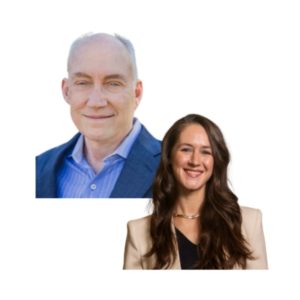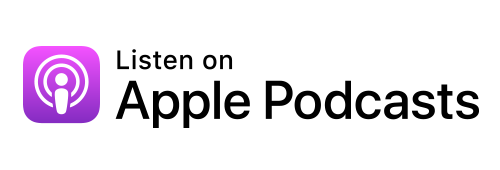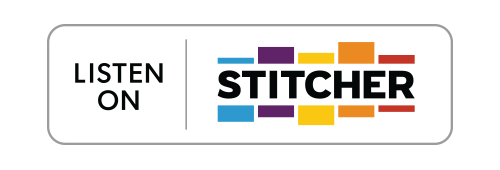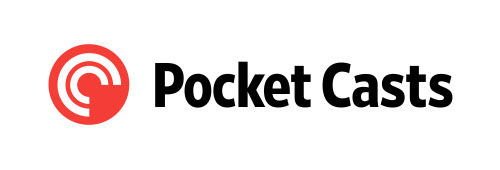 Welcome back to another episode of Inside Personal Growth. Today, we’ll be talking about advancement in pain management with relation to regenerative medicine with some experts from Tempe, Arizona, Dr.Klee Bethel and Dr. Sarah Trahan.
Welcome back to another episode of Inside Personal Growth. Today, we’ll be talking about advancement in pain management with relation to regenerative medicine with some experts from Tempe, Arizona, Dr.Klee Bethel and Dr. Sarah Trahan.
Dr. Klee has practiced interventional pain management exclusively for the last 20 years. He currently practices at the Neil Riordan Center for Regenerative Medicine. He is also the current chief of staff at the Arizona Spine and Joint Hospital, where he’s also the Medical Director.
On the other hand, Dr. Sarah is a staff physician at the Neil Riordan Center for Regenerative Medicine. Her primary focus is to improve her patients’ quality of life by helping them to find relief from both acute and chronic pain. She strives to address the root cause of her patients’ concerns and to educate them so that they can make informed decisions about their health.
Moreover, Dr. Klee has practiced in the Mesa area and has served as an Anesthesiologist in the Army Reserve for 8.5 years. Meanwhile, Dr. Sarah takes an integrative approach to acute and chronic pain concerns. Biomechanical analysis in addition to optimizing the foundations of health (diet, sleep, mental/emotional health) are key in decreasing pain and increasing function. Interventional regenerative injection therapeutics (i.e. prolotherapy, platelet rich plasma, bone marrow, and peri-natal tissue with stem cell properties) are used as needed and individualized for each concern.
You may learn more about Dr. Klee and Dr. Sarah and their services by visiting their websites.
Happy listening!
You may also refer to the transcripts below for the full transciption (not edited) of the interview.
Greg Voisen
Well welcome back to Inside personal growth. This is Greg voice and the host of the podcast. And all of my listeners know who I am. But joining us from the Reardon the Neil Riordan Center in Tempe Arizona, are Dr. Sarah Trahan and Dr. Klee Bethel. Good morning to you both.
Dr. Klee Bethel
Good morning, Greg.
Dr. Sarah Trahan
Good morning.
Greg Voisen
It's good to see you both. Thank you. You're smiling faces. You know, this show because the show focuses on wellness and spirituality. And it is a mind body spirit kind of situation. And we get a lot of podcasts from a lot of different arenas and authors and doctors who've written books and so on. And so this morning, we're going to be focusing on regenerative medicine and we're going to be focusing on pain management in particular, and a particular product that they're using called sell mixes and tele fat pod kits. But before we get started, I'd like to take a minute and introduce the two of you, if you don't mind. Sara is a staff physician at the NIR Roden center of regenerative medicine, her primary focus to improve her patient's quality of life by helping them find relief from both acute and chronic pain. She has an expertise in a wide range of option treatments well rounded approach to pain management. She's trained in nutritional counseling, herbal medicine, acupuncture, and regenerative injection therapy. She says how you feel and look oftentimes even with your skin. And Sarah, if you're looking at me this morning, I had a PDP down on Friday, so I probably look great. There's a glow but I'm peeling like crazy. Is letter into a broad range of medical esthetics. She also works in sexual health optimization. She works in a lot of different areas, but regenerative medicine, pain management, acupuncture, Chinese medicine, nutritional counseling is her background. Chloe has practiced interventional medicine exclusively for the last 20 years. He currently practices at the nail Warden center regenerative medicine in Tempe Arizona, and is the also the current Chief of Staff for Arizona spine and joint where he's also the medical director. During the past 30 years, he's practiced in Mesa area, filling roles as medical director at banner surgery centers and the Chief of Staff at Valley and Mesa Lutheran hospitals as well as banner Bay wood, and Banner mesa. He's also a hospital board member during the merger of Samaritan hospitals, forming the banner hospital organization. He served as an anesthesiologist in the Army Reserve for eight and a half years. And again, his area of focus is interventional pain management and regenerative medicine. With a background in anesthesiology obviously, he's was a surgical resident at San Francisco, an MD degree from Creighton University and University of Colorado Boulder. Well, thank you both for being on. Thanks for taking this time to speak with us. I think for both of you if we could begin by kind of telling the listeners a little bit about I know that there's a lot of stem cell work that you do there at that center, and it's kind of a focus for that at the Riordan center, but if you would kind of tell us where it's going, what's been going on and what might be the advancement here with relation to regenerative medicine.
Dr. Klee Bethel
Well, Sonoran University, which when I joined was southwest College of naturopathic medicine. We've evolved as the Pain Center originally has evolved into the Neil Riordan center for Regenerative Medicine. We started out with just me. And then we've added several gifted physicians. Dr. Jehan, Dr. Downing, Dr. Juries and Dr. VOGT are with us currently. Dr. Dang. We attracted him from China back in the 90s to come to the school and work with us. So he's a very gifted acupuncturist. He's written a couple of textbooks, on Chinese medicine and acupuncture. And he works with us yet today. Of course, we work collaboratively with each other and we're all also involved with the other components of snoring University, which would include the residents and the students.
Greg Voisen
And I noticed that there was a paper that Sarah sent to me, Chloe, kind of about electrical stimulation is something that you had written, I didn't get a chance to read the whole paper. But, you know, when you talk about advancements, and you look at some of these papers that you've written, and the research that's being done there, and this is for you, as well, Sarah, you know, it was interesting, I understand during the time of COVID, vitamin D was also a very big thing that people were speaking about. There was so much controversy around the issues in COVID. Speak with us a little bit about some of the research work that you do there as well, and how that's actually improving the advancement and regenerative medicine.
Dr. Klee Bethel
Well, I'll start about the my earlier research was in pharmaceuticals and dorsal column stimulators. That's the study you were referring to. And there were different energy used energy medicine interestingly is very much a part of naturopathic and alternative medicine if you will. Electrical energy is one of those forms and the our paths we're using it our paths are the medical doctors videos as opposed to the nature paths Dr. Jehan Allah pass tend to use pharmaceuticals, surgery and some forms of electrical energy. So I was studying of different frequencies, different ways of delivering that electric energy to the spinal cord would result in different levels of pain improvement. Subsequently, I once I started doing regenerative medicine, I set aside the stimulators, because the regenerative medicine was a better way of approaching the pain resulting from surgery and other spinal deformities. Boston arthritis and other disease processes. Yeah, it's, it's,
Greg Voisen
I found that really interesting, because, you know, you know, this has been an area which has been evolving for some time. And, you know, your center is involved in that. And, you know, you both use this cell Max and tele fab pod kit as part of your process. And Sarah, this one is probably a question for both of you. But how do you find that that kit in particular works? And why do you guys choose to use that potentially, over other therapies that you might have chosen to use?
Dr. Sarah Trahan
Yeah, so just as Dr. Bethel was saying, we’re following the standard of care, we're providing the patient with all these options for treatment. And then once we kind of hit a wall, or we're seeing improvement, but it's not being sustained, then we want to switch to something that we know is going to be sustainable. And what we found is with the fat kids, especially within tele fat is that we're able to harvest good quality fat from the periumbilical region, and then wash, purify, and then micronized, that fat and then easily deliver it through a small needle into the area of concern. And what's really important to about the kid is that there's this cannula that we're using, and the technique that we're using is relatively a traumatic. And that's important, because the more trauma that you're introducing to the body, the more the stem cells might go to the area of trauma and try to heal that. So we can be pretty gentle with the kid and harvest the tissue that we need, and then transfer it to the knee or the spine, for example, and then have all that signaling in the osteoarthritic knee, for example, their shoulder. And so that's why we really appreciate it too. It's a closed system, it's really easy to use, and it's point of care, we get the patient in and out same day, so able to follow FDA guidelines with minimal manipulation.
Greg Voisen
And it works. So it's a minimally, it's a minimally invasive procedure for pain management. And as you were saying, you evolved clay you said, you know, from the stimulation to actually using this, and you're saying that it really worked real well. What has been the experience of the patients that you've utilized it on with relation to having them heal, how quickly they heal and so on.
Dr. Klee Bethel
Well, how quickly they heal is a function of where they're at physically, so the more Are debilitated more sedentary, poor diet, people are going to heal slower. We try to address that before we do the procedure and that we change their diet, we give them proper supplementation to try to build them up to a point where they're going to benefit maximally from the procedure. The thing I like about the kits is, prior to this, we had some concerns about the product being exposed to open air, and therefore some bacteria that are just present and all air was intelligent that we've been able to use this system confident and are not attracting those airborne bacteria to closed system. And we've never had an infection of anything we've done with it. So we're very happy with
Greg Voisen
where we're aware of the fact that sometimes there is a little swelling afterwards, depending on the area of injection. But usually within a very short period of time, let's say even six weeks, there's a huge notable difference, noticeable difference in the pain and the healing in the area. Are you recognizing similar elements to on after follow up care when you see these patients after you've done these injections that you're finding really quick healing.
Dr. Sarah Trahan
I mean, the best case, I guess is when we did maybe a month ago, the patient, he came in for one knee and we ended up doing one knee and two shoulders. And he was feeling significantly better after a week, which we were surprised by because like you said, there's usually kind of this peak of inflammation over the first week. And then that slowly resides they go back to baseline and then they get improvement steadily over one to nine months. But for him, it just took a week to see that improvement. I think it's because we pair it so well with pre physical therapy, and then they get physical therapy afterwards, we're looking at their vitamin D, like you said, and screening them quite a bit so that they get the best outcomes I have with me here just in Oswestry score of one of our patients we worked with. And so 0% is no disability. And he came into our clinic scoring a little over 60%. So good bit of disability. And after 14 months after therapy, he was down to 30%. And he had that even one year post therapy so that our results are lasting and they're sustainable. And so we're really excited about that. And we're able to treat these like spinal radiculopathy. Is that what is that? Before? Pardon
Greg Voisen
me? But what is that test that you're using Sarah and Chloe that's actually giving you empirical data relative to their improvement? And how if you mentioned it, but it kind of went right by me. So it's just curious what you're doing. And I And I'd also like to speak a little bit further about this diet nutrition. Both of you are counseling these patients to improve their diet and nutritional habits as a result, because you know that it will be much more effective is that because of the process of the injection to the cells for healing, and these they actually will thrive better when somebody has a better diet.
Dr. Sarah Trahan
Yeah, so just real quick about the survey. So we're using objective measurements, we have the visual analog scale, which is like zero through 1010 being the worst pain and then one to two or two to three changes. And that scale is significant clinically. But we also like to use really specific surveys that get kind of more into the nitty gritty of their back pain using the Oswestry for example, their overall quality of life using the shortform 36 The Dash looking at the upper arms and hands, so able to really follow our patients objectively using those surveys
Greg Voisen
anymore on anymore on the diet CLI because you started mentioning it and I didn't want to interrupt you but I think it is very important.
Dr. Klee Bethel
Yeah, well, a quick analogy that should be illustrative is if you have a car and you do a bunch of work to the engine, you get all perfectly tuned. If you don't give a gas, it's not gonna go anywhere. So controlling their nutrition and make sure and make sure and making sure that they have the nutrients they need prior to the procedure. It logarithmically improves their results as well as increasing the speed that they show results.
Greg Voisen
You ever give any kind of nutritional injections are things that are associated with that or is that just truly just advice about changing their diet and nutritional habits?
Dr. Klee Bethel
That would depend At times we do iDose, vitamin, injections. Intravenous drips really?
Greg Voisen
Okay, interesting.
Dr. Klee Bethel
So do do that when it's indicated. It sounds
Greg Voisen
like you're having great success with death. It always interests me. And I think it interests the listeners as well. What initially drew you to investigate this adipose based using cannula, and then basically taking the cells versus the alternatives that are out there? Obviously that aren't using adipose, they're, they're using PRP.
Dr. Klee Bethel
Well, I've been doing this for at least 20 years, oh, I have some history, there was what gets results, and I like outcomes. And what gets me the best outcomes. And, and worst patients, if you will, the ones with the worst diseases is fat. So that's why I like fat. If they have a lesser problem, PRP is fine. I wouldn't want to necessarily subject him to lipo aspiration, if they didn't have significant disease that I was needing to treat. You know, if they have a sore joint, if they have some mild or moderate degeneration of a joint if they have some ligament tears, if they have
Dr. Klee Bethel
mild and moderate stenosis, then I think PRP is all you really need. Dr. Trahan, I'm sure has more. Yeah, well, about two
Dr. Sarah Trahan
is just the stem cell environment of the fat versus bone marrow versus PRP, you just have more abundance in the fat for longer periods of time. And you still have that paracrine that cell to cell communication as you age, that's just as good as the innocent, less cellularity. But the communication between cells is still present in the fat. And that's like he's saying the older the more needing patients that need it more, we're going to benefit more from the fat. Do
Greg Voisen
you find fair and clear that you can administer this across age groups and as sections because, you know, the reality is, some of our surgeon will say the older you get, the better your fat is, then you actually have more of it. The younger you are oftentimes less fat you have. And then the collection of that fat. Sometimes it's not as easy. What would you guys say about that? Because I know, in Tempe, Arizona, obviously you deal with a lot of retirees and people that have come there to kind of retire and maybe have more of these pain issues. But are you finding yourself being able to use this effectively across the board?
Dr. Sarah Trahan
Yeah, we are and we do screened to make sure they have enough adiposity, you know, in their periumbilical region so we can have the best outcome and get the cleanest amount of fat. And we can even put an ultrasound on him and kind of scan to see the deep adipose tissue amount. And then maybe recommend some avocados and olive oil for some patients and then that they can come back later. With they respond really well to the PRP, the B Mac and that's really easy to use. And so we really reserved the fat for more advanced conditions, failed back surgery, radiculopathy these things like that. They're
Greg Voisen
using it on shoulders, knees, and the back. Speak with us if you would about because we have spine surgeons using this. And they're actually using it after minimally invasive spine surgery to actually accelerate the healing. Any comment about that because one of ours. Doctors that uses the intelli fat kits is a neurosurgeon and back surgeon out of quarterly in Idaho, Jeffrey Larson and he speaks about doing the injections afterward. And the expediency of the healing as a result of actually injecting the patient afterwards. Have you actually tried this after back surgery with some of your patients?
Dr. Klee Bethel
Jim, generally speaking, there are patients that come with post laminectomy syndrome where they didn't get pain relief and they have additional symptoms because they had the surgery. So I was kind of curious if your surgeon would do a study and he would pick patients that he would do back surgery on and then either use the vet or not use the fat but also pick patients that he would do surgery on normally, but just do stuff out, and then compare his results after a year. I think he'd do less surgery.
Greg Voisen
Well, he Yeah, he is actually, that's an interesting thing you mentioned, is it his clinic now is in two segments. He is trying to move away from back surgery as much as possible, and gone to an in what's called an M three clinic where he's just doing what I'm going to call minimally invasive, or the kinds of things you're doing at the center there. So he's actually morphing kind of his whole practice from the back surgery and I would agree with you, you know, we had Dr. David Hanscom on the show, and you guys might know, Dr. Hanscom went from being a back surgeon to saying I'm not doing back surgery anymore, because most of my patients actually didn't see much improved benefit as a result of back surgery. Any comment from you guys? I thought my interview with him was fascinating. As matter of fact, he went into the depths of it way beyond what what I could explain at this point. But thoughts from you, I guess, if somebody comes in is having back pain. You're certainly not recommending back surgery right away?
Dr. Sarah Trahan
Yeah, we do a real thorough evaluation, if they're deteriorating, in terms of neuromuscular function, we might send them for surgical console. But we see more often than not that people are jumping to surgery evaluation sooner than they ought to, because they don't know what else is out there. And so I think, important thing, especially if you're considering surgery is to find out what maybe interventional injection technique gets you the most relief. And then with that information, pursue the return of objection, versus maybe seeing the bulging disc and thinking yes, I need to remove that bulging disc from the body and put a replacement in. Instead, let's work on the joints and the connective tissue surrounding that structure in the whole lumbar segment, for example, and then you'll have better outcomes in terms of pain relief, but also in terms of bouncing back after maybe you have an osteoarthritic pain flare or you sprained back, or things like that. So getting the right diagnosis, I think is really paramount and is overlooked a lot of times. And so that's what I think we pride ourselves on too is getting that diagnosis, and then pursuing the return of technique appropriate.
Greg Voisen
It was interesting, you mentioned that because Dr. Larson mentioned to a friend of mine who is considering alternative treatment, that after he looked at the MRI that he thought there was an infection in that disc. Now, I had never heard of that before. Have you ever? Is anyone ever counseled? Or have you thought about infection in these areas where the discard? And if so what is that I was something completely new to me when I heard it?
Dr. Klee Bethel
Unfortunately, it's one of the forms of disguises, it's very serious. There's a high mortality rate. It's importantly be put on IV antibiotics. If it is, in fact an infectious causes a disguised as interesting, we wouldn't have any immediate treatment for that other than to get them on IV antibiotics. Okay, down and to get rid of the infection.
Greg Voisen
But, but when you see it, see an MRI, can you tell that there's an infection? Or do you have to go in, obviously, you have to probe with a needle to pull part of the cells out to find out what's going on. You
Dr. Klee Bethel
don't have to do that they're in a lot of their symptoms are obvious that it's infected rather than just degenerated. Okay. Okay. Fever for one thing, severe pain that's not normally controlled. It's not controlled by the things we normally do to control that pain. And if
Greg Voisen
they're ill, yeah, they're ill. Okay. Well, so in what ways have you found Sara and Chloe, that the intelli fat beauty kits to be superior to other treatments? I know you talked about it a little bit. You said that when there's more pain, you're more apt to use the fat and do the injection that way. D Are you finding with the shoulders and the knee? You talked about this patient that you injected both soldiers and assault shoulders and the knee. And then when you do the cannulas when you actually insert the cannulas and you extract how many cc's of actual material are you bringing in out, and then using to put in either a knee or shoulder.
Dr. Sarah Trahan
So depends on the amount of structures we're treating, and then how good quality the fat is. So we want to account for the oil that we have to DeCamp the amount of Washington that we might need to do. But we might be taking for a knee, for example, we're going to be putting between four and six CC's into the joint itself. After once you see in the surrounding structures, the meniscus around it. And so we at least need maybe six to 12 CC's for both knees, we'll be getting about maybe 24 cc's of fat, which is relatively low, it's they're not even noticed they're skinnier. So it's not about that, but it's much about at all, you
Greg Voisen
didn't come in for plastic surgery. We're not doing that? Well. So the benefits to the listeners. So we've got a lot of listeners out there that are interested in wellness and health. They're interested in they might be dealing with either a back pain, or shoulder pain or knee pain. Can you explain the science a little bit behind this intelli FAT system? And how it works in the body? Because you're basically taking cells out of as you said, my midsection, and you're filtering them, and then you're re injecting them? Why is it that these fat cells in you both of your estimations work so much better than anything else?
Dr. Sarah Trahan
Well, it's a natural cushion, right. And then it's got some paracrine activity that we talked about before. And all that is, is just its ability to communicate with other cells and signal reparative cells to the area. So you're osteoblast, the Kandra sites, things that are that are gonna fill in defects, they have this signaling capacity to do that. So when we have arthritis, we have, for example, the tibia, and we have the defects in the bone that are exposing the bone, like the cartilage is worn away, and that wear and tear, there's more nociceptor signaling, so it's more pain. And so if we can put fat in those areas to maybe fill those defects or change that inflammatory response, we see results with spinal stenosis, foraminal stenosis, you have pinching of the nerve, the myelin sheath may get swollen, and all that is is fat for conductivity. And so if we can decrease the inflammation around that nerve, then that can be beneficial to and that's what I think we really love about the fat kits is that we can put that fat around those nerves and help with radiculopathy worse, that PRP might be limited in its capacity to do that. What else about so
Dr. Klee Bethel
one of the problems when we age, as we become less cellular. So if you took a small square of skin off an infant, and looked under a microscope at it, you'd see mostly cells. But if you do that to an 80 year old, you're gonna see a lot of striations, which has connective tissue, and maybe a cell here and there. So the thing I'm most excited about with the lipo aspirin product is that over time it increases cellularity. And that this has been studied. And I think that for years studies are out mounting, it continues to increase cellularity for at least four years, and there's no reason to believe that it doesn't go on continuing to do that. Because one of the things that comes with fat that you aspirate and process you do, I should call it adipose tissue because we actually remove the oil. So it's no longer fat. It's tissue, right? That it has vascular elements. It has a nice matrix. And so when you put that somewhere, you've created a living tissue. So if we put it in the spinal canal, we're replacing the cushion that used to exist there. That Tapan dinner's so much like the fat that was there before before it got pushed out. It has a lot of cells with paracrine activity. So it's talking to that tissue, they're telling it to remodel and to
Greg Voisen
heal. Yeah, for I think the layman out there listening to heal, you know, to reduce the pain significantly. So, you know, you get a lot of patients with a lot of different ailments that come through your center. And whether it's a shoulder pain or knee pain or back pain. You get plenty of pain from patients what challenges in patient treatment, have the intelli Fat Bok VOD kits helped you to overcome in those patients. So in other words, you were you've actually done these injections. And the patients have been have responded like literally 100% Or close at 90%.
Dr. Sarah Trahan
Well, I think like the PRP, like we were saying is really helpful, the bone marrow aspiration and concentrate can be helpful, but sometimes it has a limited effect. And what's nice about the fat is it doesn't have that kind of peak inflammatory that the PRP might have. It's more tolerable to the patient that's receiving the treatment. And then we're able to kind of fill in those connective tissue defects with the fact that the PRP is more liquid, right, so it's not going to fill in and stick around as much, it has more of a half life in the space, we put it. It's metabolized slower out of the joint, for example. And so people that are really refractory to other regenerative options are really benefiting from the fat transfers or the adipose transfers.
Dr. Klee Bethel
As I said before the fat or the adipose product actually becomes part of the joint. It stays there, does what we want it to do. So as time goes on, you continue to heal.
Dr. Sarah Trahan
And you can see that kind of in plastic surgery too. They're doing these fat transfers. And these, the fat is generally staying and kind of the face or the breast tissue or wherever they're putting it right, because it's becoming part of the matrix of that area. So if it can be used in plastics and kind of maintain that volume, we know that it's being maintained as well and the joint tissue, and they're studying that and they're proving so
Greg Voisen
Oh, this case, fat is good. I know that Jeff been doing some things for Instagram and posting, and he calls ye fat. And the reality is, is that both of you have indicated this morning that why fat, especially in this case, is extremely valuable in actually eliminating or reducing the pain that you might have in these various joints, or being caused by arthritis. If there are other doctors out there listening, which there are there are doctors that listen to the show as well. And you guys are on the forefront, the cutting edge, what we find is a lot of physicians are attempting to go this way. We've talked about this in the past, we know that insurance isn't a framework that these kits kind of work under. So there is a cost associated to the patient or an investment. To get the pain management done. What would you tell the other physicians that are listening today that are either on the edge or trying to make an evaluation about utilizing an Intel a fat VOD kit or using something? What might you advise them because you are experts, you've been using these for quite some time.
Dr. Klee Bethel
But it gets easier because as compared to 20 or 30 years ago, people are much more willing to go outside their insurance for what they want. 30 years ago, I can't tell you how many people I tried to convince to do something else because it was what they needed. And what we're not just going to stay with what life insurance pays for. But nowadays, people are disenchanted with their insurance. And they're much more willing to just say forget the insurance, I just want to get this better. Right. And the other thing you need to do is change the mindset is how well when you have something like a severe osteoarthritic knee that's painful and very disabling. It isn't correct to think about a fix. Because even if you had total joints surgery, that's not a fix and it's a year out of your life before you're back to normal if you will. It's management it doesn't stop you from aging, you're gonna have other things it slows it down I think but it helps you heal quicker than your degenerating. So it gives you some traction, gets you an edge gets you ahead of degeneration and repairs. And so you know if you're, if you're 50 you might and you have a knee problem you might walk out of the clinic with a sore knees for a week. But then all of a sudden you're I can you're doing whatever if your ad It might be a couple of months, before you're golfing or doing whatever your activity is that you want to get back to.
Greg Voisen
What kind of things are you doing at the center there where you're accelerating? ones? I mean, cuz, look, people are looking for longevity, I had Dan Buettner in here. You know, that was speaking about the, the Blue Zones, right? And what we do with our diet nutrition, I would assume that you're pretty heavily focused on nutrition and diet with all these older patients to attempt to have them have a less pain, full lifestyle, right? Because if you can change that, you certainly can change that element of their life. And diet is only one part. I mean, look, Dan found nine different things that people are having to do to actually have better longevity. And I think one of those things was, you know, I don't want to get focused on the psychological elements. But you know, loneliness. They're saying today in the United States, we can only count about three friends on our hands. So anything that you're doing at the center, that's kind of bleeding edge or cutting edge that would help these patients live a longer, healthier life?
Dr. Klee Bethel
Well, I want to say a couple things, and then I'm gonna let Dr. Jehan take over because that was her forte. Number one, I would take issue with the number of friends having anything to do with loneliness. You're only lonely when you're not happy with yourself. Okay? With yourself, you're not lonely. Even if you have no friends, I like that.
Greg Voisen
Because I've always said if you're, if you're expecting someone else to make you happy, you're never going to be happy.
Dr. Klee Bethel
So, once you're happy with yourself, you're not lonely. Okay? Um, the second thing as you age, you need less protein. So we live in a time when there's a lot of bodybuilders, you know, in our 20s, we get the idea we need to use a lot of protein. Well, as you get older, that's not true. It actually, in many cases, injured life quicker. There's been several giant studies about that China's study, and others. Really, we know that protein as we get older,
Greg Voisen
plant based diet, but literally vegan. I know I'm a vegan, but the point is not everybody's gonna go that severe.
Dr. Klee Bethel
You don't have to a lot of the Blue Zones. It's more of a Mediterranean type diet. Right. Right. Right. And I'm fish. Yeah, that was the other point I wanted to emphasize. It's the thing that's almost unique to the Blue Zones is the lack of stress, unmanageable stress in their lives. Yeah. So you have to find a way to manage your stress in a way that's healthy. I
Greg Voisen
totally agree with you. I couldn't agree with you more. And Sarah, do you have anything you want to add to that before? We kind of wrap up with my last question here?
Dr. Sarah Trahan
Well, another thing to think about, too, is with the diet, there's this whole debate, I think, at our clinic about protein, so
Greg Voisen
we have a reason. They're Yeah, they're not well, I mean, I'm gonna be 70 in July. I don't know your age CLI. But the point is, is that yeah, it is different. There's definitely a difference in that. So. But I'm glad that you are counseling people there at the Reardon center about these kinds of things, and that this is a whole body approach. It's not just, Hey, come in, and we're going to talk about this. I like the fact that, you know, your Sara is advising people about a good sex life, she's advising on skin, how to take care of their skin better, she's advising on nutrition, you're advising them on back pain, you're doing all kinds of things. So it's a great option for people versus going somewhere where a I'm just gonna say a normal physician may say, hey, take an aspirin, go home, and everything's gonna go away, kind of thing. So
Dr. Sarah Trahan
on quick point about what we're doing to is we're changing their diet and we're creating more of an anti inflammatory physical environment, but that also is affecting the brain and we know that SSRIs you were speaking about loneliness and kind of the mood and how that might be playing a role and people's pain experience. But SSRIs do decrease inflammation in the brain and the Mediterranean diet and all these blue zone diets are also decreasing systemic inflammation. Sian so by helping them with their physical pain, their knee, arthritis, the inflammation in the knee, we're also decreasing inflammation in the brain. So they're able to catastrophize less and have more more hope, which I think is good a two way street that's helpful for their mind and their body. And then their family, because they can do more in there more tolerable to be around probably,
Greg Voisen
well, I love the approach that you take there. And I think that, regardless of, you know, intelli fat or whatever you're using, you all are doing research associated with what you think can assist your patients in the quickest and most painless way that they can heal. They're so lastly, for people out there, they're listening to the show right now, they've heard us talk about this intelli fat kit, we've talked about a lot of things, pain management, and there's but they're seeking relief. What would you like them to know about the this potential of regenerative medicine, medicine, and the options that would be available at the Riordan center there in Tempe because, you know, some of our doctors, patients travel from all over the United States to come to meet them. Right, we experienced that, because the intelli fat kit is kind of on this bleeding edge, right? It's not every doctor isn't using this. Every center isn't using this. So people have to travel sometimes to do that. And I think if they're going to travel, they probably would want to go to a nice warm area, like Tempe. And if I have somebody in Minnesota right now listening, and saying, Wow, you know, my knee really hurts my shoulder hurts. I think we ought to go see Chloe and Sarah and see if we get fixed up? What would you want to tell them about it?
Dr. Sarah Trahan
I think Dr. Bethel said it best. A few years ago, he was saying that this is a resource rich environment. And we take the time to understand the pain generators to offer the most sustainable and effective treatment and educate our patients about what that investment is going to cost. Whether that's more time in the kitchen more time in the pool, and also financially the investment that they need to make and the procedure to get the best outcome. So we don't do anything short handed, right, we go all in completely and provide our patients the best outcome.
Greg Voisen
And clear anything, you running full evaluation of your patients. In other words, somebody comes in and they transfer their records via epic to you, let's say I mean, a lot of my patients know that that's the system that everybody uses in the kind of what we would call normal medicine world. And you get this file this thick. And you've seen all these traditional kinds of treatments that have gone on, how do you guys go about slicing and dicing that to start to work with a patient at the Reardon center?
Dr. Klee Bethel
Well, after I'm done crying for their suffering and pain, read all the you know, I can come to a plan. And I always include the patient and what that plan is going to be. I often I asked them what they think before I tell them what I think it's important to change the mindset to help them to understand what's going on and how it's going to work. And if you do that, and everything works better, they're accepting of their hafting, they're gonna have to participate in this, they can't just take a pill, they can't just have surgery, they're going to have to participate both before and after.
Greg Voisen
When I think it's important for the listeners out there that are listening, it's not like you don't accept insurance. The reality is if they're on Medicare, the things that are covered by Medicare, you're gonna cover, it's only the other things you're recommending that might not be covered by their current Medicare Supplement, I'm saying Medicare because I'm sure you have a lot of people that are over 65 that are coming to the clinic. So, you know, that is the way it is. And as we have an aging population, and they're living longer, um, you and I'm sure both of you will say this, you don't have to live with these pains. You can live a very strong, healthy life, all the way into your 90s I see it happening all the time now. So, you know, are you seeing a lot of patients in their 90s and in their hundreds?
Dr. Klee Bethel
My oldest independently living patient is 107
Greg Voisen
Whoa, I just dropped my jaw independently living 107 And if you were to tell me what might be the secret for that 100 Didn't the seven year old glee?
Dr. Klee Bethel
I'm gonna say genetics, genetics.
Greg Voisen
Okay. All right, let's get to know. And there's more
Dr. Klee Bethel
energy at 107 than I have 70.
Greg Voisen
Wow. That's, that's so nice to hear. And, Sarah, anything last parting words from you that any of the things we've talked about? No,
Dr. Sarah Trahan
I just think like we've said before the patient should do their homework and invest in themselves and come to get educated and treated appropriately. And we're happy to serve whoever was ready to get well. Well,
Greg Voisen
we're so appreciative of having you both take this time to be on inside personal growth and to talk about regenerative medicine and wellness and healing and pain management. It was really quite informative. And I appreciate you also speaking about the benefits of the intelli fat kit, how you've used that and your patients and how your patients have benefit from that. Thank you both for being on the show. And thank you for taking this time to speak with both the physician side who might be listening, and also those patients out there that are listening to the podcast.
Dr. Klee Bethel
Greg, thank you. It's been a pleasant morning was you.
Greg Voisen
Thank you guys so much, both of you and your nice smiling faces.
Sign up to receive email updates
Enter your name and email address below and I'll send you periodic updates about the podcast.











Leave a Reply